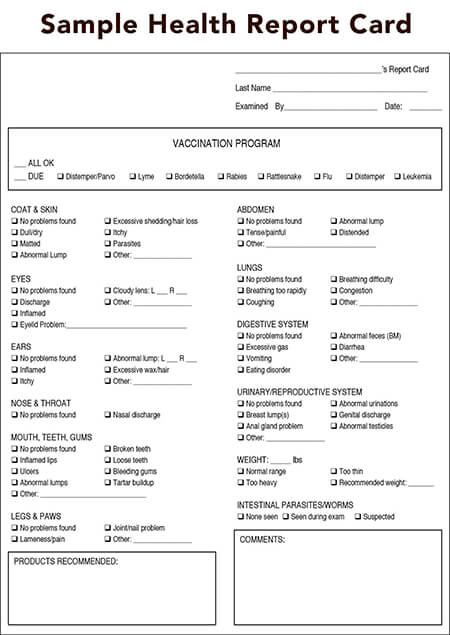
Lodging the Senior Pet
By Outstanding Pet Care Learning Center
Today’s pets are living longer, due to advancements in veterinary care, preventative medicine, immunizations, quality food and care. As pets enter their “golden years,” their needs may change simply due to age or health conditions. You likely have pets that have been staying with you for years and have noticed that as they have aged, their needs have changed. It’s important as professional pet care providers to recognize this and offer appropriate services for their health and wellness.
When is a Pet Considered “Senior” or “Geriatric”?
Many veterinarians start to refer to dogs and cats as being “senior” or “geriatric” at or around age 7 or 8. This varies depending on species and breed. In general, cats and small dogs have a longer lifespan than large dogs. Consequently, a cat or small dog might not be considered “senior” until 10 or 12 years old, while a Great Dane might begin to show signs of aging by 5 years.
General Health Conditions Associated with Senior Pets

Reduced Hearing and Vision
In a pet care facility, it may take these pets additional time to become accustomed to their new surroundings. The pet may become disoriented because they are in an unfamiliar place. If a door to the outside area is provided, a pet may not know how to find and use it.
Deaf pets, in particular, can become confused and intimidated by other pets and unfamiliar vibrations from equipment being used in the facility. Pets with reduced hearing may easily startle. If you know or sense an animal has hearing difficulties, refrain from reaching in to wake up or leash a quiet pet. Approach the pet slowly and gently, and consider tapping the enclosure to alert the pet of your presence.
For pets that are blind, take a moment to walk them around their area, play yard, or enclosure and let them find the boundaries. A few minutes in your company familiarizing themselves with the new surroundings can help relieve discomfort and anxiety. Introduce them to several staff members by allowing them to sniff hands (if this can be done safely) while speaking in soothing tones. Blind pets will use smell and hearing to identify their surroundings.
Occasionally, you may accommodate pets that are both deaf and blind. For these pets, it’s ideal to make them aware of your presence before reaching in the enclosure. Knock on the door, stomp your feet, or gently rattle the door to create vibrations they can feel. If the dog is up and about, hold out your hand so his sense of smell can announce your proximity.

Difficulty Moving Geriatric pets, like senior people, often have arthritis or other musculoskeletal disorders. At home, the pet may normally sleep on carpeting, a chair or a bed. If your facility has concrete or hard-surfaced flooring, this environment may seem very cold and hard to them. Senior pets need extra bedding to help cushion old joints and pressure points like elbows and hips. Egg crate foam beds, orthopedic pet beds, extra blankets or towels will help to reduce stiffness.
Senior pets afflicted with arthritis or hip dysplasia may have difficulty rising. Give these pets extra time, encouragement, and assistance to rise. It’s important to keep these pets getting up and walking around frequently to prevent stiff joints from getting worse. It need not be a full-fledged walk outside; even a four or five-minute walk up and down the aisle of the facility several times a day will help keep joints limber.
If the dog can’t walk on its own, a towel or sling under the caudal belly (immediately in front of the hips) can help give enough leverage to get the pet up and support the dog while it walks. If it’s unusual for the dog to walk on its own, follow the established procedures for contacting the owner and/or veterinarian for advice.
Cats also get arthritis. These cats should lodge in enclosures with extra-soft bedding and without shelving to avoid falls.
Older pets also benefit from being held or cuddled, and if possible, taken out of the enclosure away from the hustle and bustle of the lodging environment. If your facility has a smaller environment or quiet area, it might be best to arrange for senior dogs to stay there.
Feeding Senior Pets
Older dogs and cats may have poor teeth. They may need softer diets or canned food in order to take in sufficient calories. Dry food may be too difficult to chew and may make their mouth hurt. Make appropriate special diet notes from the customer on the pet’s record. This will help you understand the best type of food to provide if the owner did not supply their own food.
Monitor food and water intake carefully, and note anything unusual the client may need to know about. In a lodging situation, you may have a better chance of noticing a problem than the owner would at home (especially if the household has multiple pets).
Older pets tend to lose weight more easily than younger pets. Often their bodies no longer store body fat that they can rely on for subsistence. If the pet is a poor eater, you can tempt it to eat by offering a high value food or by hand-feeding if necessary.
Ideally, a pet should be weighed upon entering the facility, and then every few days during lodging. Any gains or losses in weight while lodging (especially during long stays) should be noted and a veterinarian consulted if there is a concern. A change in body weight of 5% from the initial weight (e.g., one pound for a 20-lb pet or five pounds for a 100-lb pet) should trigger a call to the veterinarian.
Chronic Illnesses and Disorders Related to the Senior Pet
Senior pets may come to your lodging facility with a variety of chronic illnesses. In general, these are not disorders that can be cured, but are lifelong disorders which can be managed and controlled with diet or medications. In general, senior pets with these chronic conditions are fine for lodging as long as they are being treated. A pet care facility that is able and willing to care for these pets can distinguish itself from competitors by catering to the special needs of senior pets.
Ask the pet parents of these seniors if their pets have any chronic issues, and if so, what symptoms to watch for. Be sure to have current phone numbers for the pet’s veterinarian and owner’s emergency contact(s). In addition, it’s important to train staff to recognize the signs if a health condition worsens. Some of the more common health issues for senior pets:
- Diabetes
- Cushing’s Syndrome
- Congestive Heart Failure
- Chronic Kidney Disease
- Hyperthyroidism
- Dental Disease
- Cognitive Dysfunction
- Cancer
- Urinary Incontinence
Since pets are living longer than ever, you will undoubtedly encounter senior pets in the pet care facility. Accepting the senior pet can require additional staff training, care, and careful monitoring of the pet for troubling or abnormal behavior patterns. Offering pet services such as additional attention, special bedding, soft music, and an extra quiet location can help assure the best pet experience while providing peace of mind for their pet parents.
Outstanding Pet Care Learning Center is dedicated to protecting and growing the Pet Care Industry through World-Class Pet Care Training and Education. OPC Learning Center’s curriculum:
For more about our courses, visit: www.OPCLearningCenter.com


